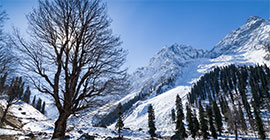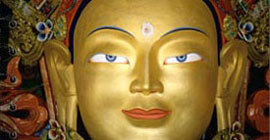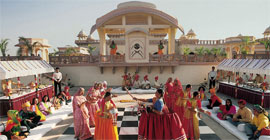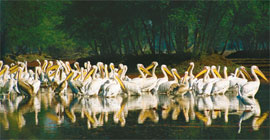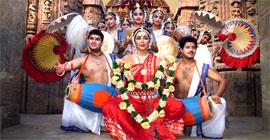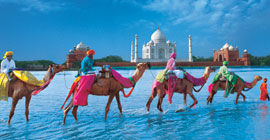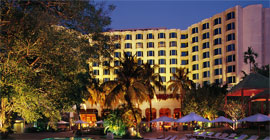Ahmednagar
Home | Ahmednagar
Ahmednagar is a city of Ahmednagar District in the state of Maharashtra, India, on the west bank of the Sina river, about 120 km northeast of Pune and 120 km from Aurangabad. Ahmednagar is the largest district in the Maharashtra state of India. Sugar, milk and bank co-operatives thrive here. Ahmednagar is home to 19 sugar factories and is also the birthplace of the cooperative movement. Due to scarce rainfall, Ahmednagar often suffers from drought. Though citizens learn multilingual (e.g. English, , Marathi, ) in , Marathi is the primary language for daily-life communication. Ahmednagar has recently published a plan of developing the city by year 2031.
History of Ahmednagar
The town was founded in 1494 by Ahmad Nizam Shah on the site of a more ancient city, Bhingar. With the breakup of the Bahmani Sultanate, Ahmad established a new sultanate in Ahmednagar, also known as Nizam Shahi dynasty. It was one of the Deccan sultanates, which lasted until its conquest by Mughal emperor Shah Jahan in 1636. Aurangzeb, the last great Mughal emperor, who spent the latter years of his reign, 1681-1707, in the Deccan, died there in 1707, and a small monument marks the site.
In 1759 the Peshwa of the Marathas obtained possession of the place by bribing the Muslim commander, and in 1790 it was ceded by the Peshwa to the Maratha chief Daulat Rao Sindhia.
Ahmednagar was invaded by a British force under General Wellesley and captured. It was afterwards restored to the Marathas, but again came into the possession of the British in 1817, according to the terms of the Treaty of Poona.
Numerous Mughal-era buildings dot the environs. Ahmednagar Fort, once considered the second most unimpregnable fort in India, was used by the British to house Jawaharlal Nehru (the first prime minister of India) and other Indian Nationalists before Indian independence. A few rooms there have been converted to a museum. During his confinement by the British at Ahmednagar Fort Nehru, he wrote the famous book The Discovery of India.
Places of interest
Chand bibi Palace - The place has Salabat Khan Tomb, it is a three-storey structure made of solid stone. It is 13 km from Ahmednagar city. Situated on the top of a hill, it has a view of the city lights at night. It is visible from almost anywhere in Ahmednagar City.
Ahmednagar Fort - The fort was built by Ahmed Nizam Shah. India's first prime minister Jawaharlal Nehru wrote a book The Discovery of India in this fort when he was detained by the British in 1942.
Renuka/Durga Goddess Temple - This temple is located in Kedgaon (around 3 km from Ahmednagar Railway Station, 5 km from Ahmednagar ST bus-stand) which is near Nagar-Pune highway. Navaratri (nine nights) festival is a celebration of nine nights of battle between the Goddess Durga and demon-king Mahishasura. Eventually Goddess Durga killed Mahishasura on the ninth night and thus the festival signifies the triumph of good over evil.
Alamagir - Alamgir is situated near Bhingar on Pathardi road. Aurangzeb died at the age of 91 at the very same place, his body was taken to Khultabad, near Aurangabad & buried there. This historical place also houses a Masjid & Baradari where meetings used to take place. The library near the masjid has rare Qurans, dating back to the time of emperor Aurangzeb. One of the Qurans here was written by the emperor himself.
Vishal Ganpati Mandir - This Ganeshji temple is located in Maliwada area in Ahmednagar City. This temple has a great importance to the people of Ahmednagar.
Siddhatek Siddhivinayak - Temple of God Ganesh.
Shirdi - home to the late Sai Baba, revered by Hindus and Muslims alike, about 83 km from Ahmednagar City.
Samadhi of Meher BabaMeherabad, where the samadhi (tomb) of the spiritual master Meher Baba is a place of pilgrimage, visited by thousands each year, particularly on the anniversary of his death, Amartithi. His residence was at Meherazad (near Pimpalgaon village), approximately nine miles north of Ahmednagar.
Ralegaon Siddhi - a village which is a model for environmental conservation
Harishchandragarh - a hilly fort.
Avhane, Shevgaon - Temple of Ganesh (Nidrista/Sleeping).
Pimpalner - Samadhi Temple of Shri Sant Nilobaraya, 2 km west of Ralegan Sindhi, Parner Taluka. Also called Prati Pandharpur.
Pedgaon - Baleshwar Temple, Temple of Laxmi Narayan
Trimbakji Dengale's Wada : Nimgaojali, a small village in Sangamner taluka of Ahmednagar district, came into limelight in the last phase of the Maratha empire. Trimbakji's spacious wada has now lost its former glory. Some of the portions of this two-centuries old structure are in dilapidated condition. The seventh or the eighth generation descendants of Trimbakji are now residing in this Wada.
Haregaon - Place in Ahmednagar where majority of people is catholic and the feast of Mother mary Celbrates every year by the local Church.







